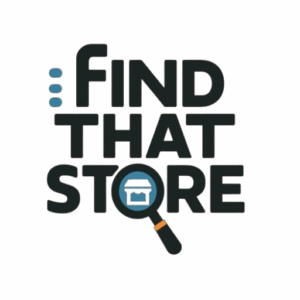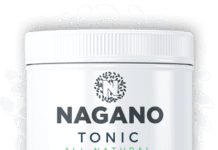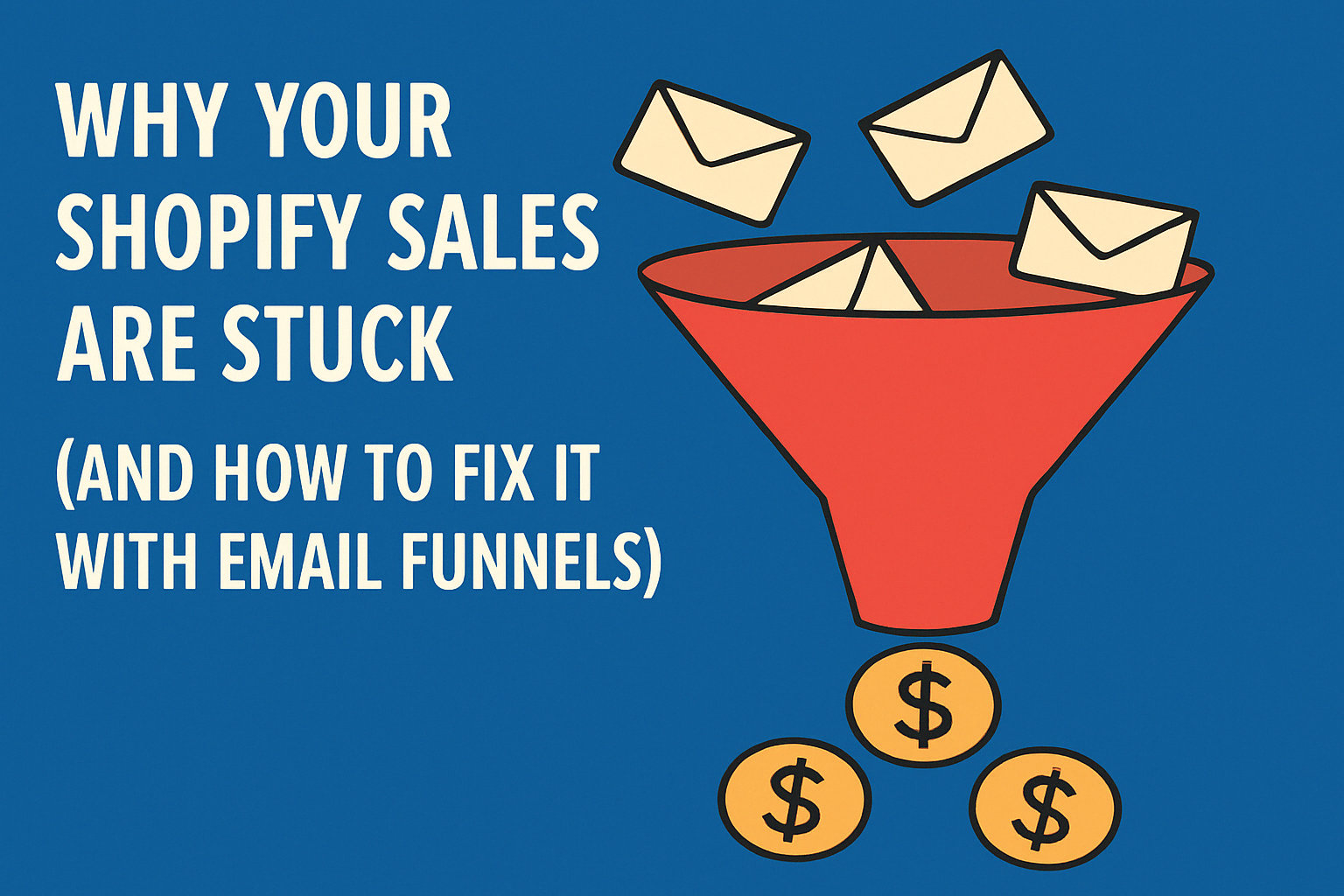If you’re a Shopify store owner, you’ve probably been here:
- You’ve set up your store with care
- You’ve found your niche
- You’ve run ads or posted on social media
- You’ve maybe even gotten some traffic
But the results? Meh.
Your sales just aren’t growing consistently. Some days are good, most are not. You’re tired of pouring energy into your store without predictable returns.
What gives?
Here’s the uncomfortable truth:
Your store might not have a sales problem. It has a relationship problem.
Most Shopify owners focus on the storefront but forget to focus on the follow-up. That’s where your real sales potential is hiding.
The Hidden Killer: One-and-Done Traffic
Let’s say you’re getting 100 visitors a day to your store. That’s 3,000 potential customers a month.
But if you’re not capturing emails or retargeting them properly, you’re losing 98% of that traffic for good. Poof. Gone.
Even if you have the most beautiful product page and the best product in your niche, people still leave. Life gets in the way. They forget. They get distracted.
That’s why your Shopify sales are stuck.
Email Funnels: Your Secret Weapon for Predictable Sales
Imagine if you could:
- Capture a visitor’s email address with a small incentive
- Automatically send them a series of emails that tells your story, builds trust, and introduces your products
- Convert them into a customer over the next 3, 5, or 7 days
You can.
It’s called an email funnel, and it’s the missing link in most Shopify businesses.
Why Most Shopify Owners Skip Email Marketing (And Why You Shouldn’t)
There’s a myth going around: “Email is dead.”
That’s what social media giants want you to believe. But here’s the data:
- Email has an average ROI of $42 for every $1 spent
- Over 80% of ecommerce buyers expect follow-up emails
- Repeat customers are 9X more likely to convert
Email is your owned audience. It’s not at the mercy of Facebook algorithms, ad bans, or influencers.
Yet most Shopify owners avoid it because:
- It feels technical
- Tools are expensive
- It seems time-consuming
But it doesn’t have to be.
You Don’t Need 5 Tools. You Need One Funnel.
Most store owners think they need:
- Klaviyo or Mailchimp ($$)
- A landing page builder
- A popup plugin
- A CRM
- Zapier for automations
But there are platforms now that offer all of that in one place — with templates built for Shopify users, even on a free plan.
Yes. You can build full funnels and automated email sequences without tech overwhelm or breaking the bank.
What a Simple Funnel Looks Like (With Huge Impact)
Here’s a real example for a store that sells organic skincare products:
1. Lead Magnet Page
Headline: “Get Glowing Skin in 5 Days – FREE eBook + 10% Off” Button: “Send Me My Guide!”
2. Thank You Page
Message: “Thanks! Check your email in the next 5 minutes for your free guide and 10% discount.”
3. Email Sequence (5 Days)
- Day 1: Deliver guide + welcome email
- Day 2: Brand story + featured product
- Day 3: Customer testimonial + reminder of discount
- Day 4: Product benefits + call to action
- Day 5: Limited-time bonus or urgency email
This works like a silent salesperson 24/7. And once it’s live, you can focus on driving traffic — knowing your funnel is working in the background.
What to Write in Your Emails (Even If You’re Not a Copywriter)
Email doesn’t have to be fancy. It just needs to be real.
Here’s a simple content structure to follow:
- Hook: A question or bold statement (“Are you tired of flaky skin?”)
- Story: Share something personal, a customer experience, or an insight
- Offer: Introduce your product as a solution (but not too salesy)
- Call to Action: Ask them to click, reply, or check out the product
Rotate these through different themes:
- Education (how to use your product)
- Transformation (before/after stories)
- Social proof (testimonials or reviews)
- Scarcity (last chance for a discount)
The goal isn’t to sell in every email. It’s to build a relationship that leads to sales.
The Tool I Recommend (Especially for Shopify Users on a Budget)
I’ve tested countless platforms over the years — some are too expensive, some too complex, others just don’t integrate well with Shopify.
The one that consistently performs for beginners and pros alike?
It’s:
- 100% free to start
- Includes email, funnels, pages, automation
- Easy to set up, even without tech experience
- Works perfectly for Shopify store owners who want to build an email list fast
You can launch your first funnel today, collect leads tomorrow, and sell on autopilot next week.
Final Thoughts: Shopify Growth Isn’t About Luck — It’s About Leverage
You already have what you need:
- Products
- A store
- Some traffic
Now it’s time to plug in the one piece you’re missing — a funnel.
Email marketing isn’t just another tactic. It’s the engine that drives long-term success in ecommerce.
Start small. Stay consistent. Use a tool that removes the friction.
👉 Click here to launch your first Shopify email funnel — and stop letting traffic go to waste.
🔍 FAQ – Shopify Email Funnels & List Building (2025)
Do I need email marketing if I already use Instagram and TikTok?
Yes — social media is for attention. Email is for conversions. You don’t own your followers on social platforms. One algorithm change and they’re gone. But your email list is yours forever. That’s why serious brands invest in both.
What’s the best free email marketing tool for Shopify stores?
If you’re looking for a free tool that includes email campaigns, automation, and landing pages — all in one — Systeme.io is one of the top choices right now. It removes the tech headache, especially for new store owners.
Can I use email marketing even if I don’t have many products?
Absolutely. Even if you have just one product, email lets you build trust, educate your audience, and follow up with them until they’re ready to buy. In fact, email works even better when you focus on one product at a time.
How often should I email my list?
Start with 1–2 times per week. The key is consistency. As you get more comfortable, you can scale to 3–4 per week. Just make sure your emails are valuable, not spammy.
What kind of lead magnets work best for Shopify stores?
- Discount codes (10% off your first order)
- Free shipping coupon
- Entry into a giveaway
- Educational guides (“7 ways to use our product”)
- Early access to new products
The better the incentive, the higher your opt-in rate.
How do I connect my funnel to Shopify?
Most funnel builders will give you a link to your landing page — you can promote it via ads, in your header menu, on popups, or link to it from your product pages. Systeme.io even lets you sell digital products directly if you want to test new ideas outside Shopify.
Can email marketing help with abandoned carts?
Yes. One of the highest converting email sequences is the abandoned cart reminder. You can automate this inside your funnel tool to send emails 1 hour, 1 day, and 3 days after cart abandonment — boosting recovery rates.
Isn’t this a lot of work to set up?
Setting up your first funnel might take a few hours, but it saves you hundreds of hours over time. Once it’s live, you don’t need to touch it unless you want to optimize or update the content.
Want help launching your Shopify email funnel fast? Use this free funnel builder that handles email, automation, landing pages and even affiliate programs — all in one dashboard.
It’s what I use and recommend to every Shopify store owner who’s serious about growing smarter in 2025.







